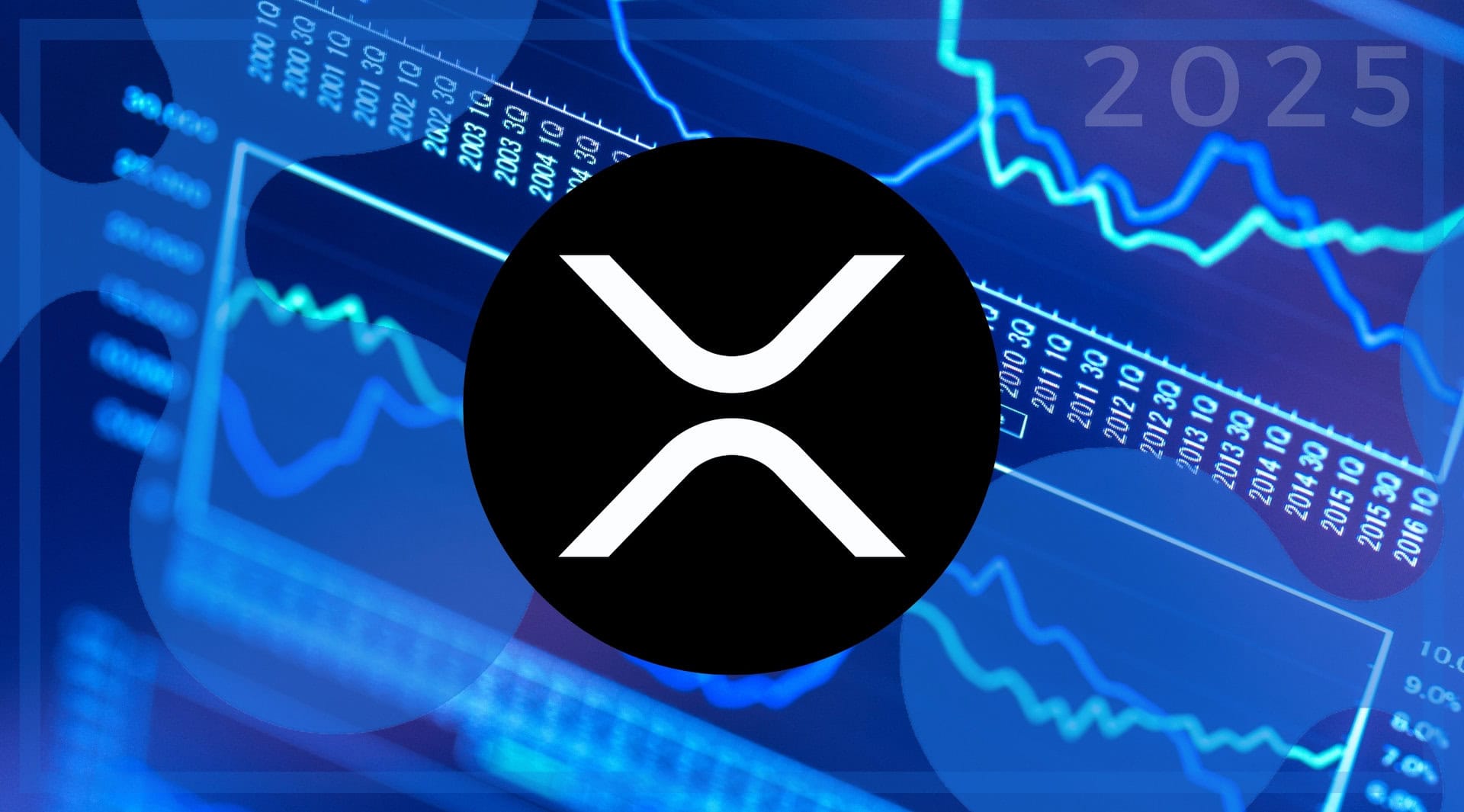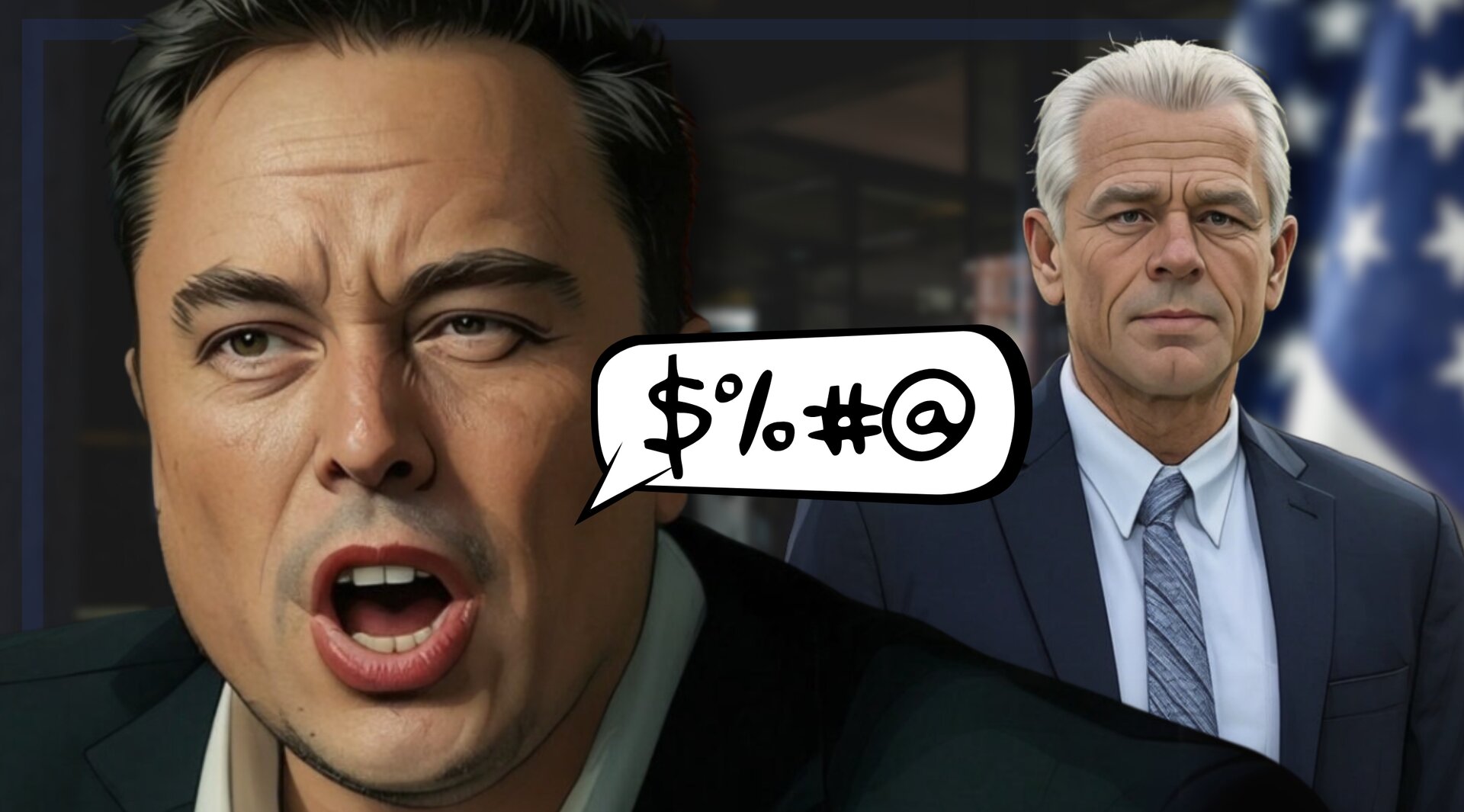In 2024, cryptocurrencies are on another bull run and the Crypto Winter is but a distant memory to everyone except those who lost their shirts in 2022. Three Arrows Capital and Coinbase Ventures remember.
Lightspeed Ventures Partners and Galaxy Digital remember, especially Galaxy’s CEO, Mike Novogratz who got a LUNA tattoo. It may be convenient to cover up the tattoo. For Novogratz, it’s “a constant reminder that investing requires humility.” For us, it’s valuable to look back because we still don’t know exactly who caused the Terra-LUNA crash.
In May 2022, $60 billion was wiped away from the crypto market due to the failure of TerraUSD, an algorithmic stablecoin (aka USD for some stupid reason), and LUNA, another cryptocurrency. Both were created by Terraform Labs (TFL) and traded on the Terra blockchain, which was created in 2018 by Do Kwon and Daniel Shin.
The popular wisdom on the Terra-LUNA crash was that it was a collective trading phenomenon rather than the result of manipulation by a third party.
However, the SEC’s current investigations into the crash raise questions that have been percolating through the internet among those most hurt by the crash, including retail investors and Do Kwon, founder of TFL.
Kwon accused Sam Bankman-Fried (SBF) of an intentional attack on the currency using a huge bet with capital he secured with a loan from Gemini.
Do Kwon stated, “I think the time has come for Genesis Trading to reveal if they provided the $1B USD shortly before the crash to SBF or Alameda – the purchase from LFG was represented as stemming from ‘interest to participate in the Terra Defi ecosystem’ – not to provide ammo for a peg attack.”
Rumors circulate about the actions of Alameda and FTX, as well as Jump Trading, Wormhole, and Coinbase. Jump Trading was adversely affected by the crash, Wormhole was offered as a solution, and Coinbase had to decide whether to suspend trading while Terra Labs decided what to do.
Then, there’s Anchor Protocol which held as much as 72% of all Terra, LUNA’s sister token, according to Decrypt, acted like an engine pumping up the bubble with lofty claims of 20% “stable” ROI.
How the Anchor protocol helped sink Terra https://t.co/UAPdQgbLJV pic.twitter.com/2Vpx89NU9O
— The Verge (@verge) May 20, 2022
Elephants Fight, Mice Trampled
Joe Singer, a retail investor in Wrapped LUNA, watched his investment lose more than 99% of its value. Since then, he’s been investigating how it came about.
Singer told Disruption Banking that “1.7 minutes before the halt of the blockchain, Alameda exchanged 37,000 USDC for 670 million wrapped LUNA. The total supply had been around 9 million wLUNA. After this trade, they halted the blockchain for eight hours.”
During these eight hours, Singer believes, Do Kwon and his lieutenants and counterparties discussed the future of Terra.
As LUNA crashed, arbitrage opportunities opened up for insiders who understood the blockchains and could move fast while other less-sophisticated, less-informed investors frantically debated whether to sell or hold, and struggled to move their tokens. Problematically, they didn’t know who to trust.
Singer said he and other wLUNA investors “find ourselves stuck between two opposing forces.” They sought help from Terra Classic and Terra 2.0, but no one could offer them any real recourse. Terra Classic and the TFG never responded to any of their questions.
Now, the SEC’s cases against some of the biggest names in crypto could transform the face of the industry in the U.S., so the stakes are high and rumors are rife.
Crypto Coup de Grace
In 2021, Alameda and FTX (read: SBF) seemed to launch a depeg attack on TerraUSD in the form of a half-billion wash trade, using a loan from Genesis, functioning as a short on the stablecoin.
The wallets that were supposedly used were quietly loaded up with USD several months before they were deployed. Then, they made a trade in Curve, a swap pool, to collapse the ecosystem.
Jump had invested heavily in Terraform Labs, and Jump tried to stabilize its stablecoin in the wake of the depeg attack. Disruption Banking explained how the attack obligated Terra to go on a minting spree to maintain the peg here.
Neel Somani quit his job as a quantitative researcher in the commodities group at Citadel, and took a huge pay cut to join Terra. A few weeks later, the #crypto lost over 99.9999% of its value. #LUNA https://t.co/s97fRPgKI9
— #DisruptionBanking (@DisruptionBank) May 17, 2022
Jump offered market-making services to Terraform Labs, providing liquidity to trades in LUNA, USD, and aUSD. The agreement also included borrowing tens of millions of LUNA tokens in exchange for TFL selling tokens to Jump at a huge discount.
Last year, Taewoo Kim, an investor hurt by the crash, sued Jump Trading in Illinois District Court, accusing Jump of “secretly schem[ing]… to manipulate the market prices of USD and aUSD by making secret, coordinated trades to prop up USD to its $1 peg.”
The SEC allowed material produced by Jump Crypto Holdings, Jump’s crypto arm, to be kept under seal in the case against Terraform Labs. Nevertheless, it was pretty obvious who “Firm-1” was in the indictment against Kwon.
And Taewoo Kim made note of that in his lawsuit, writing, “the criminal indictment against Kwon alleges that, in or around May 2021, Kwon ‘contacted representatives of a United States trading and investment firm (‘Firm-1’) to obtain their assistance in altering the market price of USD.’ It appears that the unnamed firm referenced in Kwon’s criminal indictment is Jump.”
Jump Stays Mum
Interestingly, it seems like Jump displayed a “consciousness of guilt” because when they purchased 62 million USD tokens, they did so on multiple crypto exchanges in an attempt to conceal their manipulative actions.
Jump’s actions stabilized USD for a while, and as a reward, TFL suspended “on or about May 23, 2021” the previously established benchmark of borrowing that Jump had to meet for the discount. Not only that, TFL agreed to hand over more than 61.4 LUNA million tokens over four years at $0.40 per token, regardless of market conditions, meaning that Jump would pay a few cents when LUNA was trading at over $90 per token. As a result, Jump made about $1.3 billion from its arrangement with Terraform Labs, and for that reason, Taewoo Kim sued Jump for “unjust enrichment.”
Meanwhile, in August, Wormhole, a blockchain bridge, was held out as a way for LUNA investors to move their tokens off chain. The process for migrating tokens between chains involved burning the tokens and minting them on the new chain, including Solana, Binance, or Ethereum.
1/ The @wormholecrypto support for Terra in the V2 UI is live!
— Terra 🌍 Powered by LUNA 🌕 (@terra_money) October 19, 2021
Transfers of $UST and $LUNA between Terra, @ethereum, @solana, and @BinanceChain via Wormhole’s cross-chain bridge are now available 🙂 https://t.co/2gWsIq2KxW
Jump facilitated the growth of this process like a secret partner, and the announcement was made only days after Jump acquired Wormhole. Before the development of this cross-chain bridge, there was a Terra Shuttle, which only worked between Terra and Ethereum.
Terra’s developers explain in a Medium post, “The plan is to gradually phase out Shuttle token liquidity, hook Wormhole into Terra Bridge, and drive liquidity to Wormhole. In the current Wormhole support for Terra, both USD and LUNA will be available to transfer between chains.” They noted that they “expect the short-term co-existence of multiple bridge assets to become normalized as the industry transitions to more robust decentralization technology.”
In this whole process, TFL was trying to convey the appearance of decentralization, although with Jump right behind, they were actually centralizing the control and the profits. Do Kwon was cheerleading this complete and utter deception on Twitter.
The most decentralized stablecoin is also about to become the fastest. $UST on @solana is going to melt all the faces. https://t.co/cCP19pqk5g
— Do Kwon 🌕 (@stablekwon) August 10, 2021
Do Kwon and Jump Trading only acknowledged their thick-as-thieves relationship in September 2021, after the announcement of Jump’s establishment of Jump Crypto.
It's been a real pleasure working with @stablekwon and the Terra team over the last couple years. A+ folks https://t.co/qizwdrke50
— Kanav Kariya (@KanavKariya) September 14, 2021
In June 2022, Jump Crypto published a post-mortem on the depeg without mentioning Jump’s involvement. Twitter users were not amused as can be seen in the responses to Jump Crypto’s tweets.
1/ Over the last few weeks, we at Jump Crypto have been studying the UST depegging and have three key observations. pic.twitter.com/kq48npoM8C
— Jump Crypto 🔥💃🏻 (@jump_) June 3, 2022
Jump Trading has been silent about the reason they parted ways with Wormhole. Chatter on the net says it might involve the saga with Terra Labs and Do Kwon.
Coinbase Offsets LUNA Losses
When Terra LUNA went into a minting death spiral and crashed, the fall in value created an arbitrage opportunity in wrapped LUNA, which temporarily remained at .50 cents.
Coinbase and their Coinbase Cloud (formerly Bison Trail), their validator, kept allowing LUNA to trade on their platform after other exchanges had delisted it. Coinbase was holding Terra LUNA when the price went through the floor, there were various large transactions in wrapped LUNA on Coinbase.
⚠️ New Dataset⚠️
— zkDomains 🪶 (@zkdomains) January 6, 2024
Top receivers of $wLUNA from Coinbase 11 for May 12th-14th. 27 wallets received exactly 31,694,614,083 through varying amounts of transactions totaling 855,751,731,924 which is 95% of the max balance for CB10 of 898,216,082,875.https://t.co/p0BjA1idWa pic.twitter.com/0zsquAvFlG
Over the next two days until the 14th of May, Coinbase experienced a spike of wrapped LUNA.
⚠️ New Dataset⚠️
— zkDomains 🪶 (@zkdomains) January 6, 2024
Coinbase 11 daily $wLUNA balance 8/12/2021-11/4/2022.
May 14th Coinbase had 898,216,082,875 🤯https://t.co/6BDFhmB27b pic.twitter.com/k0x1GFk9eh
An eagle-eyed Twitter user under the handle of @Coinbasewhistleblower alleged that Coinbase controlled a certain wallet that profited from the situation.
While @terra_money was flooded with billions of $Luna and priced at 7¢ the $ETH wrapped Luna $wLuna had a supply of a few dozen million and was selling on @CoinbaseExch at 50¢ for hours. Who was abusing this 600% premium? CB wallet in question: https://t.co/z57WqvvgIL (3/13)
— Coinbase Whistle Blower (@CoinbaseWhistle) May 30, 2022
On Friday the 13 of May, 2022, someone did an impossibly large transaction in LUNA, which caused a spike followed by a crash of LUNA’s value, shown below.
On May 20, Coinbase Cloud, the company’s infrastructure arm, announced the exchange would drop Terra LUNA and future Terra projects, Coinbase gamed the market to cover its loss.
Just stop offering the product to your clients, almost every other exchange had halted trading, but not @coinbase and @brian_armstrong. Another sweet opportunity to hedge their losses at the expense of clients. Here you can see the CB wallet balloon quickly: (6/13) pic.twitter.com/4IObUdDnyk
— Coinbase Whistle Blower (@CoinbaseWhistle) May 30, 2022
This created a dilemma for any and every Coinbase user holding LUNA. They fretted about what to do, panic-posting on Reddit and Twitter. Some of them tried to go the Wormhole route to get their coins off the platform.
Unfortunately for them, because Coinbase decided to drop Terra projects, any LUNA or USD tokens they tried to send through Wormhole were lost.
A frustrated LUNA investor fumed on Reddit, “Coinbase is telling me that they will not do anything about this and the funds are locked while also claiming that if they happen to list Wormhole LUNA/USD one day, the funds will automatically show up…They are obviously able to remediate the situation, but are choosing not to on their own accord. They also are unwilling to escalate this further.”
To make matters even worse, TFL rolled out Terra 2.0, a new “decentralized” token, explained in another Medium post on May 27, 2022, about two weeks after the crash. They did an airdrop based on the amount of tokens held by investors on the Terra Classic chain. However, since Coinbase stopped supported Terra projects, LUNA investors on Coinbase also lost out on the airdrop.
Wrapped LUNA investors, especially those on Coinbase, were unsure of how to proceed.
Joe Singer is one of approximately 400 wrapped LUNA investors who have continued to dig through SEC court filings to make sense of it.
The portrait painted by the situation suggests that the creator of the token was able to deceive and manipulate the market, arbitrarily launching a new “decentralized” token that was essentially no different than the one it replaced. Meanwhile, exchanges caught mostly flat-footed by the crash moved to cover themselves, irrespective of their clients and counterparties.
Game Set Match
Now, it seems as if the game is set and the SEC, despite making lots of noise about enforcement, is stuck trying to extradite Do Kwon from Montenegro, where the authorities don’t seem to know what to do with him, but they are not inclined to allow him to face charges in South Korea or the U.S., where prosecutors are spoiling for a chance to put him behind bars.
A user on Twitter explained to Disruption Banking, “This is a big deal in crypto because in Ethereum the smart contracts run every transaction. And they broke the contract so that wrapped LUNA no longer exchanges for $1.00-.60 LUNA but a brand new token Lunc which is priced at about 10,000% less. So while app 1 LUNA = $1 it takes 10,000 Lunc (LUNA Classic) to = $1. You can see the seriousness of allowing a group of influential people to simply CHANGE the asset a wrapped security exchanges for. Next month it could be bitcoin or any number of other cryptocurrencies that would defraud investors out of their money!”
Too Good to be True
Do Kwon was taken in by his own product. He named his daughter Luna. He thought it would just keep growing. SBF understood what Kwon seemingly did not.
SBF said, “If you do zoom out, right, and you say, ‘This is a stablecoin, backed by volatile assets, what’s gonna happen in a big market move.’ Right? Like, you know how this plays out.”
When the smoke clears, and we look around at the wreckage, it seems obvious that Kwon and SBF were both snake oil salesmen. However, they are not the only ones who are responsible. After promising a 15% yield, Stablegain lost $44 billion. Anchor Protocol promised a 20% yield and later watched a billion dollars in disappear in a week. Yet most of the people who ran these platforms have escaped justice.
Looking at this complex imbroglio, one could begin to doubt if the law against market manipulation really matters. The cases where a hacker like Avraham Eisenberg (who Disruption Banking wrote about here) or a fraudster like SBF (who Disruption Banking wrote about here) actually face justice are outliers, vastly outnumbered by the egregious cases like Do Kwon and Justin Sun (who Disruption Banking wrote about here and here), who always seem to slip through the cracks in the legal system.
1/ I’ve spent the last few days on the phone calling Terra community members – builders, community members, employees, friends and family, that have been devastated by UST depegging.
— Do Kwon 🌕 (@stablekwon) May 13, 2022
I am heartbroken about the pain my invention has brought on all of you.
Both Do Kwon and SBF were arrogant, but Do Kwon did not seem to foresee what SBF believed was inevitable. In the aftermath, Kwon could only express remorse, point fingers, and run from the legal consequences. For retail investors like Joe Singer who lost out when the Terra ecosystem crashed, the legal wrangling that may eventually lead to his imprisonment is cold comfort.
Author: Laird Dilorenzo
#Crypto #Blockchain #DigitalAssets #DeFi
Laird Dilorenzo is a hatchet thrower and wordsmith.
The editorial team at #DisruptionBanking has taken all precautions to ensure that no persons or organizations have been adversely affected or offered any sort of financial advice in this article. This article is most definitely not financial advice.
















2 Responses
Investigate the SEC and Coinbase??
So what ? In a nutshell does it mean for the investment of lunc??